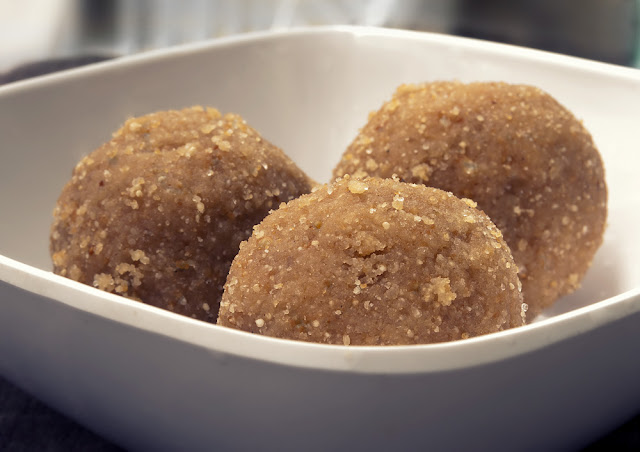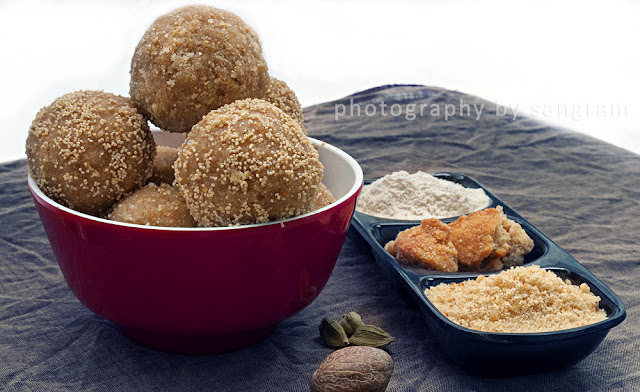Safed dhokla, literally meaning white dhokla, is one of the most popular Gujarati snacks
 Dhokla is a really versatile dish. This white variety of dhokla is made chiefly with rice, which means it goes with almost anything. It tastes great with a wide range of dips, sauces, pickles. It is not one of those items that you have to plan the entire menu around, it just blends with most combinations of dishes. It can be a part of a formal meal, or it can be served as a snack. It is easy to whip up in a few minutes if you have the batter ready. You can also use different seasonings to give a subtly different flavor to each batch. This much loved snack has also inspired some unusual food combinations, one of them being ras dhokla, i.e. dhokla with mango pulp.
Dhokla is a really versatile dish. This white variety of dhokla is made chiefly with rice, which means it goes with almost anything. It tastes great with a wide range of dips, sauces, pickles. It is not one of those items that you have to plan the entire menu around, it just blends with most combinations of dishes. It can be a part of a formal meal, or it can be served as a snack. It is easy to whip up in a few minutes if you have the batter ready. You can also use different seasonings to give a subtly different flavor to each batch. This much loved snack has also inspired some unusual food combinations, one of them being ras dhokla, i.e. dhokla with mango pulp. Clean, wash, and soak three measures of rice to one measure of urad dal separately for 4-6 hours. Grind them separately. Grind the urad dal to a fine paste till it is light and fluffy. Grind the rice slightly more coarsely. Mix the two pastes and let it stand for 5-6 hours or overnight so that it ferments. At the end of that period, either cook the batter or refrigerate till you need it. This batter keeps in the fridge for well over a day. The traditional way of cooking dhokla requires a large container for steaming, a small inverted bowl to be placed in the boiling water, and a flat dish or pan containing batter to place on top of the bowl. Then a large dish covers the big container. It can easily be cooked in a pressure cooker or in an idli cooker too.
Clean, wash, and soak three measures of rice to one measure of urad dal separately for 4-6 hours. Grind them separately. Grind the urad dal to a fine paste till it is light and fluffy. Grind the rice slightly more coarsely. Mix the two pastes and let it stand for 5-6 hours or overnight so that it ferments. At the end of that period, either cook the batter or refrigerate till you need it. This batter keeps in the fridge for well over a day. The traditional way of cooking dhokla requires a large container for steaming, a small inverted bowl to be placed in the boiling water, and a flat dish or pan containing batter to place on top of the bowl. Then a large dish covers the big container. It can easily be cooked in a pressure cooker or in an idli cooker too. While cooking, prepare the batter in small batches by transferring to another container and adding salt and ground green chillies. Spread the batter thinly in a greased flat pan or a deep dish and season with red chilli powder, ground pepper or chilli flakes. Cover it and cook on medium flame for 5-6 minutes. Use the clean knife test to check if it is cooked. If not, cover and cook some more. Once cooked, remove from the steaming container and let it cool slightly. Cut it into any shape or size of your choosing, remove from the pan using a flat spoon, and serve hot.
While cooking, prepare the batter in small batches by transferring to another container and adding salt and ground green chillies. Spread the batter thinly in a greased flat pan or a deep dish and season with red chilli powder, ground pepper or chilli flakes. Cover it and cook on medium flame for 5-6 minutes. Use the clean knife test to check if it is cooked. If not, cover and cook some more. Once cooked, remove from the steaming container and let it cool slightly. Cut it into any shape or size of your choosing, remove from the pan using a flat spoon, and serve hot. Recipe for Safed Dhokla
½ cup urad dal
5-6 Ground green chillies
Salt
Seasonings, such as ground pepper, red chilli powder, or chilli flakes
2. Grind them separately. Grind the urad dal to a fine paste till it is light and fluffy. Grind the rice slightly more coarsely. Mix the two pastes, cover and let it stand for 5-6 hours or overnight so that it ferments.
3. While cooking, prepare the batter in small batches by transferring to another container and adding salt and ground green chillies.
4. Spread the batter thinly in a greased flat pan or a deep dish and season with red chilli powder, ground pepper or chilli flakes.
4. Cook by any steaming method on medium heat for 5-6 minutes. Use the clean knife test to check if it is cooked. If not, cover and cook some more.
5. Once cooked, remove the pan from the steaming container and let it cool slightly.
6. Cut it into any shape or size of your choosing, remove from the pan using a flat spoon, and serve hot.








